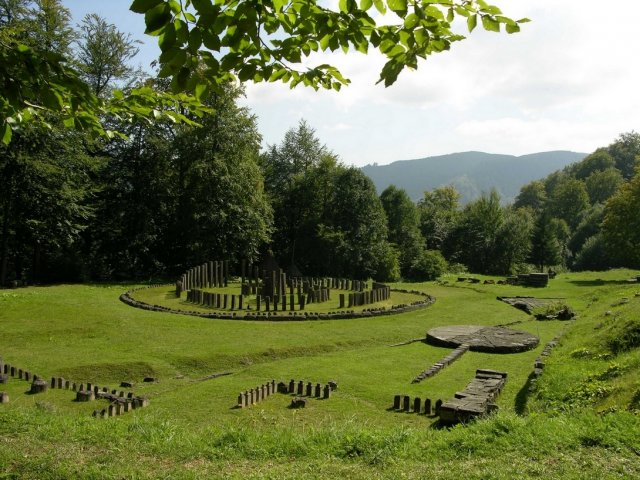 Legendary Sarmisegetuza
Legendary Sarmisegetuza
To the east of Hunedoara are the Sebes Mountains – poorly developed and populated, and difficult to access, though not very high. It is easy to get lost in the beech thickets and the maze of mountain meadows. Only people, what you can come across here, they are shepherds, woodcutters and tar workers burning charcoal.
In the backwoods of this wild land, in the band of Orastie, archaeologists have discovered the ruins of Danish cities and fortresses; here at the top of the Gradistea mountain was the legendary capital of the Daks, Sarmisegetuza.
The Dacians made history in the days of the Persian King Darius. The Danish king Burebista has been noted, among others. this is why, that he fought Caesar at Pharsalus. The Dacians built stone fortresses, they knew metallurgy, Latin and script. Reportedly King Decebal wrote a letter to Emperor Trajan once, written in correct Latin on… the hat of a huge mushroom.
After Trajan's Danish wars (101-106) The Romans expelled the entire population of the great Dacian capital and surrounding settlements, bringing to Italy approx. 50000 captives, 100 tons of gold and 300 tons of silver. They razed the Sarmisegetuza to the ground. However, a lot of Daks went to the mountains, giving rise to a shepherd's population (elements of their culture, np. loose white shirts and moccasins, they are alive even in the culture of Polish and Slovak highlanders).
The mountains of Orastie are deserted. For several centuries, Roman posts forbidden access to the area of the former capital of the Daks, the ruins of towns and villages have been engulfed in the forest. W XVI w. on the plain of Hateg, west of Hunedoara, damaged fragments of some ancient city were found. The humanists of that time mistakenly called it Sarmisegetuza, even a nearby village was given that name. The error was corrected only after World War II, when the remains of the true capital of the Daks were discovered in the mountains of Orastie.
Nowadays, traces of Danish temples can be seen on Mount Gradistea, great stone calendar, paved road, fragments of walls and remains of colonnades, and in the area – the remains of several agricultural settlements and castles.